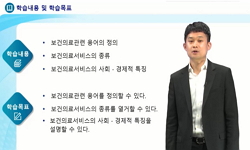This research focused on a total of 378 patients with external injuries under the age of 14 who visited the emergency center at a university hospital in Korea, during the months of January, April, August and November between January and December of 20...
http://chineseinput.net/에서 pinyin(병음)방식으로 중국어를 변환할 수 있습니다.
변환된 중국어를 복사하여 사용하시면 됩니다.
- 中文 을 입력하시려면 zhongwen을 입력하시고 space를누르시면됩니다.
- 北京 을 입력하시려면 beijing을 입력하시고 space를 누르시면 됩니다.

의료정보를 활용한 14세 이하 외상환자 응급실 총 경유시간에 미치는 요인 = A Research on the Total Emergency Room Time for Child Patients under 14 years suffering from External Injuries using Medical Information
한글로보기https://www.riss.kr/link?id=A75691187
- 저자
- 발행기관
- 학술지명
- 권호사항
-
발행연도
2008
-
작성언어
-
- 주제어
-
KDC
300
-
등재정보
KCI등재
-
자료형태
학술저널
- 발행기관 URL
-
수록면
27-45(19쪽)
- 제공처
-
0
상세조회 -
0
다운로드
부가정보
다국어 초록 (Multilingual Abstract)
This research focused on a total of 378 patients with external injuries under the age of 14 who visited the emergency center at a university hospital in Korea, during the months of January, April, August and November between January and December of 2007. In addition, the survey was conducted only on even number days and ranged across the whole year to reflect the impact of seasonal characteristics on the collected data. The research focused on determining the characteristics and inflicting cause of these patients with external injuries, analyzed the total time spent in the emergency room and obtained the following results. 1. When classifying the patients into different genders, the proportion of males (67.5%) was higher than that of females (32.5%). According to the different age groups, the highest ratio, at 61.1%, was patients under the age of six. 2. Looking at the total number of minutes spent in the emergency room, the longest amount of time occurred during April with 162.7 minutes, followed by 121.9 minutes in January and 92.4 minutes in November. August had the shortest period of time spent in the emergency room, a significant statistical difference from the other periods of the year (p<0.001). 3. Regarding the amount of time required for each examination, patients required to provide a urine test spent an average of 204.7 minutes while those who did not spent 113.5 minutes on average. This is a 5% statistical difference among the two groups (p>0.05). 4. Looking at the five most commonly diagnosed problems in the emergency room, the total number of people with these top five commonly diagnosed illnesses comprised 55.6%, or 210 patients out of 378. 5. Utilizing the Decision Tree Model to estimate the total number of minutes required per visit, the first classifications were made using a chemical examination factor. People subject to chemical classification spent an average of 177.7 minutes, which was longer than the overall average of 115.2 minutes, and those exempt from chemical examination spent an average of 103.8 minutes, which was shorter than the average. Conclusion ; Effort to curtail the total time spent in emergency rooms is vital in guaranteeing efficient management of hospitals and providing medical services. The delay experienced by many comprehensive professional medical centers must be resolved through the establishment of effective delivery of medical services, increased supply of patient rooms and other policy oriented implementations. However, for now, this problem must be resolved by increasing the level of patient satisfaction and guaranteeing effective operation of patient rooms, which will significantly contribute to the general management and success of hospitals and institutions.
동일학술지(권/호) 다른 논문
-
- 한국병원경영학회
- 류정걸 ( Chung Kul Ryu )
- 2008
- KCI등재
-
의료기관 진료비 삭감율 및 이의신청 회수율과 관련되는 관리요인
- 한국병원경영학회
- 박현숙 ( Hyun Suk Park )
- 2008
- KCI등재
-
- 한국병원경영학회
- 정상귀유 ( Takahiro Inoue )
- 2008
- KCI등재
-
- 한국병원경영학회
- 문영전 ( Young Jeon Moon )
- 2008
- KCI등재




 ScienceON
ScienceON KISS
KISS






